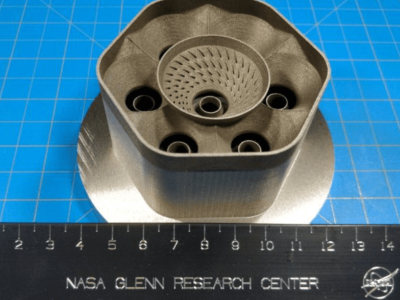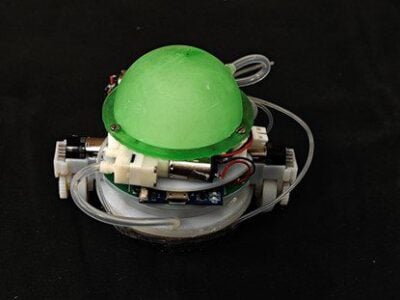
How automotive applications benefit from advanced MOSFET packaging
MOSFETs are the ‘actuators’ of the electronic age. Most vehicle systems require at least one to drive a motor or solenoid. Given the wide usage, it is not surprising that the technology is rapidly advancing to deliver ever more efficient and reliable devices in the smallest package possible.
Probably the most technologically complex item most people own is the car on their driveway. According to a recent report by Price Waterhouse Coopers (PwC), semiconductor billings in the automotive sector would be approximately US$37.4bn in 2016, 10% of all semiconductor shipments.
The automotive sector would have the fastest growth, some 9.4% – driven by huge demand for cars in emerging economies as well as the growth in electronics content in cars. Further PwC analysis showed that semiconductors currently represent approximately one-third of the total car cost, but this is forecast to rise to half of the total cost by 2030.
Applications within vehicles fall broadly into two main categories, automation of existing functions and new applications made possible by advances in technology. Nowadays, basic functions such as locks, mirror adjustment, window operation, seat position or operating the sunroof are almost always powered as are the controls and vents in the climate control system – just a few years ago these would have relied on mechanical systems based on cables and levers.
As technology advances, cars are capable of becoming more aware of their environment and modern driver assist systems lessen the chance of accidents through systems such as automatic braking, lane departure warnings and adaptive cruise control. Cars are becoming able to read road signs and able to communicate with the world around them – including the ‘smart’ infrastructure being rolled out on key routes in many countries.
Automotive electronics has always been considered a challenging discipline and that remains true today. The environment itself is harsh – increasingly, semiconductors are being deployed under-the-hood or in suspension systems where they encounter vibration, high temperatures and dirt. Even when used in the cabin, temperatures can be extreme through a combination of ambient heat and the confined spaces available to install the electronic system.
Not only is the environment challenging, but also automotive electronics systems have to be some of the most reliable – especially where safety is concerned. Notwithstanding this, cost is always a key requirement – and many systems require certification, which can add to the cost.
In order to address a number of these challenges, leading manufacturers of semiconductor devices – including MOSFETs – continue to innovate new technologies, enabling existing applications to be better fulfilled and sometimes facilitating new applications. While the fundamental semiconductor technology behind MOSFETs continues to evolve, recent innovations have fundamentally improved the package technology – and the improvements are especially relevant for automotive applications.
Currently, the de-facto standard for MOSFET packaging is currently the DPAK – a surface mount device with three pins and a large mounting tab for thermal conduction and physical strength. The small size and convenient tape-and-reel packaging have made the format very popular, especially in automated manufacturing environments.
Despite its popularity, the DPAK does have some drawbacks. Many of today’s ultra-thin designs (especially those found in the confines of automotive applications) use components that are substantially lower profile than the DPAK’s 2.3mm height. Also, the wire bonds that connect the semiconductor die to the leadframe in a DPAK limit thermal and electrical performance. These wire bonds are very thin (~70um) and, even when multiple bonds are used in parallel; they limit the thermal performance and current capability of the DPAK as well as restricting the ability to reduce RDSON to the low levels demanded by modern power-related designs.
To address these limitations, On Semiconductor has recently introduced the ATPAK (‘Advanced Thin PAcKage’) as a next-generation package for modern power designs.
The ATPAK has a height of just 1.5mm, compared to the 2.3mm of the DPAK. This, coupled with the fact that the ATPAK has the same footprint as the DPAK, leads to a 35% reduction in size that makes ATPAK ideal for modern designs. The common footprint ensures that the ATPAK is backwards compatible with existing designs using the DPAK.

with 60% less footprint than D2PAK.
A revolutionary new copper clip in the ATPAK replaces the wire bonds of the DPAK – this new technology brings several substantial benefits. With Copper being an excellent thermal conductor, the clip facilitates much improved heat transfer between the semiconductor junction and the pins. Through reducing the thermal resistance of the package (RTHJ+A), far greater densities become possible in power-related designs, especially in automotive applications.

handling, thermal dynamics and RDSON
Also, the copper clip has substantially greater cross-sectional area than the 70um wire bonds. This minimizes the RDSON of an ATPAK-based MOSFET, increasing efficiency and reducing power losses and heat generation. Additionally, the greater cross-sectional area of the clip increases the current carrying capability to 100A – a figure previously only achieved by the D2PAK, which has 7.5 times the volume of the new ATPAK.
On Semiconductor conducted benchmark tests to compare the thermal performance of the DPAK with the new ATPAK package and to demonstrate the advantages of the new technology. DPAK and ATPAK devices were placed on separate, yet identical, PCBs and controlled to dissipate 1.44 W each.
A thermograph was used to perform non-intrusive measurements of the surface temperatures. These measurements revealed a case temperature of 80℃ for the DPAK and 74.8℃ for the ATPAK. The junction temperatures for each device were calculated by using the thermal resistance for each package, resulting in junction temperatures of 76.0℃ and 82.2℃ for the ATPAK and DPAK respectively.

clearly demonstrated the benefits of the ATPAK design.
These results clearly show that the new clip-bonding technique used in the ATPAK delivers improved thermal performance. Furthermore, the ATPAK’s ability to dissipate heat better than the DPAK – despite 35% less volume – results in a 6.2℃ lower junction temperature and greater reliability.
With the low levels of RDSON available in ON Semiconductor’s ATPAK MOSFETs a number of automotive applications can be transformed. Take, for example, a simple reverse protection circuit, which is normally facilitated with a diode.

using a diodes or MOSFETs
With the diode arrangement, even at relatively low currents, the power dissipated in the diode can be significant – around 2.4W at 3A load current. Not only is this expensive in terms of power loss, but will also require a heatsink that takes up precious space and increases the BOM cost.
Using a P-channel MOSFET in a SOT23 package does show some improvement, especially at low values of load current, although at 3A the power losses are broadly comparable to the diode solution.
With the lower RDSON in an ATPAK MOSFET there is a substantial improvement with power losses less than one-tenth of that of a diode (or SOT23 MOSFET) at a 3A load current. Not only is the ATPAK MOSFET smaller in itself, its ultra-efficient performance saves the cost and space required to add a heatsink.
Within ON Semiconductor’s wide range of MOSFETs, the automotive ATPAK MOSFET solutions offer a full suite of products for a variety of automotive applications. The future will see the introduction of new N- and P-Channel devices with the ability to handle currents up to 120A (ID Max) and sub-5 milli-Ohm values for RDSON that allow for high-efficiency operation in demanding applications. All current and future devices are Pb-Free / RoHS-Compliant, Halide-Free and also PPAP capable and AEC qualified for automotive applications.
About the author:
Takashi Akiba is Product Engineering Manager at ON Semiconductor.
 If you enjoyed this article, you will like the following ones: don't miss them by subscribing to :
eeNews on Google News
If you enjoyed this article, you will like the following ones: don't miss them by subscribing to :
eeNews on Google News




